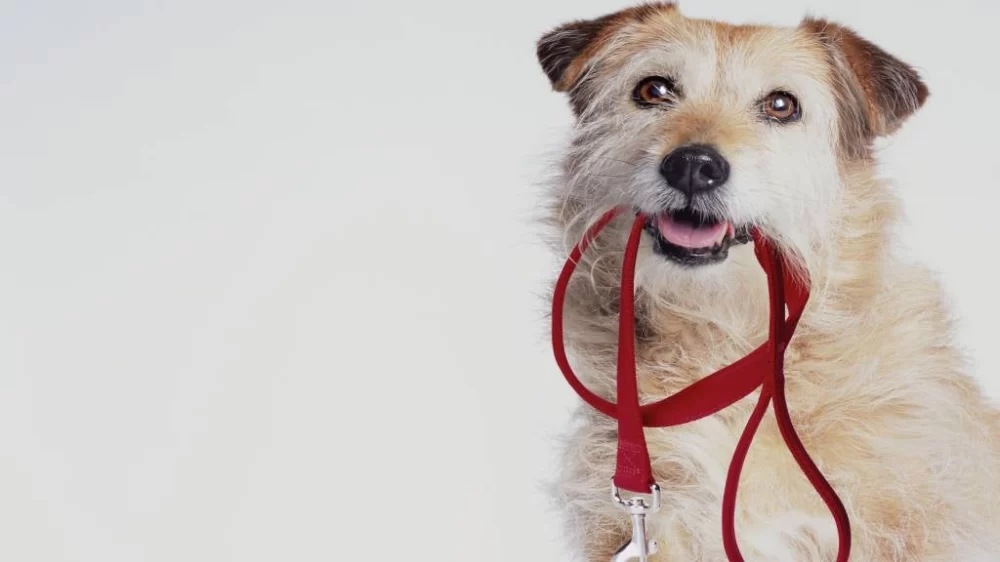Best Ways to Train Your Dog to Walk on a Leash
Training your dog to walk on a leash is one of the most essential skills you can teach your furry companion. As a dog owner, I've learned that the key to successful leash training is consistency, patience, and the right approach. Whether you have a puppy or an adult dog, leash training can be a fun and rewarding experience for both of you. In this article, I’ll share my personal experiences and effective techniques for teaching your dog to walk calmly on a leash.
1. Understanding Why Leash Training Is Important
Leash training is crucial for both you and your dog’s safety. I’ve encountered many challenges walking dogs who hadn’t been properly trained on a leash. From tugging and pulling to disobedience, untrained dogs can make walks stressful for everyone. Leash training helps your dog learn good walking manners, keeps them close to you, and prevents dangerous situations, like running into traffic or pulling away from you in crowded places. Proper leash training ensures both you and your dog enjoy your outdoor adventures without stress.
1.1. Benefits of Proper Leash Training
Proper leash training isn’t just about control; it’s about forming a bond with your dog. It allows you to safely explore the outdoors together, strengthens the relationship between you and your pet, and builds trust. I noticed that after training my dog, walks became a bonding experience. Instead of being pulled in every direction, we both walked side by side, which made the entire outing more enjoyable.
1.2. Common Leash Training Issues
Some of the most common issues dog owners face during leash training are pulling, lunging, and excessive excitement. My dog, for example, was initially very excitable and would pull on the leash as soon as we stepped outside. It took some patience, but by using consistent methods, we were able to solve the problem. Understanding the root cause of these issues—such as excitement, anxiety, or poor previous training—helps in finding the right solution.
2. Choosing the Right Leash and Collar for Training
Before you begin training, it’s essential to choose the right equipment. I used to think any leash and collar would do, but I soon realized that certain types of gear are more effective in training. The right equipment can make the training process smoother and more comfortable for both of you.
2.1. Leash Types for Training
For leash training, a standard 6-foot leash is the best option. I found that retractable leashes, while fun, don’t offer the same level of control as a non-retractable leash. The 6-foot leash provides enough slack for the dog to walk but also gives you control if they start to pull. For training purposes, I recommend a flat leash over a chain leash as it’s gentler on the dog’s neck.
2.2. Collar vs. Harness
Choosing between a collar and a harness can be tricky. I’ve personally had good success with both, but if you have a dog prone to pulling, a harness that clips in the front (like a no-pull harness) can provide more control. This type of harness discourages pulling because it redirects your dog’s attention toward you when they try to pull. On the other hand, a traditional collar might work for dogs that don’t pull as much, as it’s simpler and doesn’t interfere with your dog’s movement.
3. Basic Leash Training Techniques
Training your dog to walk on a leash involves basic techniques that I’ve used successfully with my dogs. The key is patience and consistency. Here’s how I trained my dog step by step:
3.1. Start Indoors
When I first started leash training, I found it helpful to begin indoors, where there were fewer distractions. I’d put the leash on my dog and let them walk around the house with it on. This way, they became accustomed to the feel of the leash without the added pressure of outdoor distractions. I also practiced simple commands like “sit” and “stay” while on the leash indoors, which helped them associate the leash with positive behavior.
3.2. Teach the “Heel” Command
The “heel” command is one of the most important commands for leash walking. I taught my dog to walk beside me by saying “heel” every time they walked in the correct position. When they walked beside me without pulling, I praised them enthusiastically. I used treats as a reward, but positive verbal reinforcement works just as well. Over time, my dog began associating walking next to me with positive outcomes, and it became second nature.
3.3. Correcting Pulling
One of the most common issues when training dogs to walk on a leash is pulling. When my dog pulled on the leash, I would immediately stop walking and stand still. This action taught my dog that pulling would get them nowhere. Once they stopped pulling and turned to face me, I would praise them and resume walking. Repeating this process made it clear to my dog that pulling results in no progress, while walking nicely leads to rewards.
4. Dealing with Distractions During Walks
Training your dog to walk on a leash also involves teaching them to focus, especially in distracting environments. Early in my dog’s training, they would get distracted by other dogs, people, and even interesting smells. To handle this, I introduced more distractions gradually. I started by walking in quieter areas and slowly worked up to busier environments like parks and streets. When my dog focused on me and ignored distractions, I rewarded them with treats and praise.
4.1. Stay Calm and Patient
Maintaining calmness is essential during training. I found that if I became frustrated, my dog picked up on that energy, which made the situation worse. By staying calm and patient, my dog remained more relaxed, making the training process smoother. Over time, distractions became less of an issue, and my dog learned to focus on me during our walks.
4.2. Practice in Different Environments
Once my dog was well-behaved in a quiet area, I gradually introduced more challenging environments. I practiced walking on busier sidewalks, near other dogs, and in areas with more people. This exposure helped my dog learn to stay focused, no matter where we were. It also gave me the confidence that our walks would be enjoyable, no matter the situation.
5. Advanced Techniques for Experienced Walkers
Once your dog has mastered basic leash walking, you can introduce more advanced techniques to enhance your walks. For instance, if your dog is walking well and staying by your side, you can add some fun challenges like walking through obstacles or training them to stop at specific points on the walk. These additional techniques can further strengthen your bond and make walks even more enjoyable.
Conclusion: Enjoying Walks with Your Well-Trained Dog
Leash training is a process that requires patience, consistency, and understanding. With the right approach, you and your dog can enjoy peaceful, stress-free walks. By using the techniques I’ve shared, including starting indoors, using positive reinforcement, and gradually introducing distractions, you can train your dog to be a well-mannered walking companion. Remember, each dog is different, so don’t get discouraged if it takes time. The bond you’ll build with your dog through leash training will make all the effort worthwhile.












